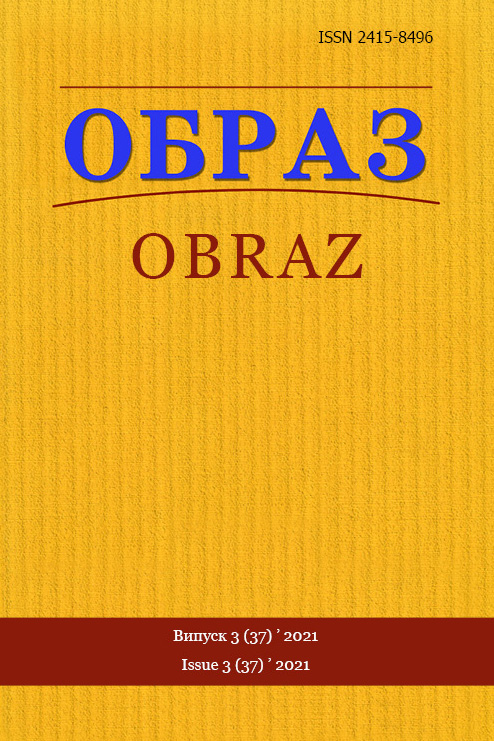Abstract
Introduction. The article aims to identify the potential and prospects for the implementation of media in the digital dimension of technologies for building a personal professional brand, as a guarantee of accumulation of its own audience in social networks. The concepts of selfbranding in journalism are analyzed, the method of sociological survey (questionnaire) clarifies the expectations of producers of media content for users and identifies the optimal vectors for their interaction in the structure of digital reality. Relevance of the study lies in the plane of outlining within the professional discussion the position of supporters of individualization, personification of the profession in the digital age, actualization of the concept of multifunctionality, universality of the media producer in a competitive information media space.
Methodology. The main method of research is a sociological survey (questionnaire), namely: a mass survey of respondents by filling out an electronic questionnaire service «Google Forms». Different types of methods of analysis, induction and generalization of quantitative research results, bibliographic and descriptive method, secondary analysis of the results of specific scientific and sociological research conducted by Ukrainian and foreign scientists are used. Results. As a result of the research, the audience’s unappealable orientation on interaction with specific media outlets was established. Thus, for 59 % of respondents, the personal brand of the presenter, the person who represents the program, is decisive for choosing the channel of receiving information, against 41 %, who prefer to trust the brands of specific projects. Ukrainians of all ages agree that without working on their own image, on the perception of its audience to achieve success in the profession is impossible (according to 90% of respondents), the need to promote and promote themselves as professionals confirm 85 % of respondents. Conclusions. In the conditions of more and more probable competition of media professionals with practically unlimited possibilities for production of content by artificial information neural networks, the role of the individual in the profession is actualized. A person who will be able to accumulate a community of like-minded people around him, offer an up-to-date agenda, accompany his information like-minded or critical opponents of information opponents by bypassing the thresholds of propaganda and misinformation can not only succeed and gain recognition in the profession. the fight against hybrid information aggression that Ukraine opposes.
References
1. Amosov, O., Didenko, N., Lebedeva, K. (2015), «Branding as the main marketing tool in Ukraine», Investytsii: praktyka ta dosvid [Investments: practice and experience], no 12. рр. 10–12.
2. Berezenko, V. (2020), «Transformation of advertising in the context of digital technology development», Derzhava ta rehiony. Seriia: Sotsialni komunikatsii [State and regions. Series: Social Communications], no 4, рр. 72–78.
3. Bogdanovich, G. (2010), «Media projects as a quality indicator of modern journalism», Naukovyi visnyk Uzhhorodskoho universytetu. Seriia: Filolohiia. Sotsialni komunikatsii [Scientific Bulletin of Uzhgorod University. Series: Philology. Social communications], no. 10, рр. 138–139.
4. Hyrina, T. (2017), «Social-communication vectors of radio broadcasting transformation in the context of mobile journalism», Derzhava ta rehiony. Seriia: Sotsialni komunikatsii [State and regions. Series: Social Communications], no 3 (31), рр. 80–86.
5. Hyrina, T. (2018), Ukrainian-language Radio in the World Media Space: Monograph, KPU, Zaporizhzhya, 296 р.
6. Larina, J., Medvedkova, I. (2017), «Branding as a factor in ensuring the competitiveness of the enterprise», Sotsialno-ekonomichni problemy suchasnoho periodu Ukrainy [Socio-economic problems of the modern period of Ukraine], no. 1. рр. 15–20.
7. Sidorkina, I. (2018), «Media projects in the media environment: ways to preserve and promote ethnojournalism», Oharёv-Online [Ogarev-Online], no 3 (108), URL: https://cyberleninka.ru/ article/n/mediaproekty-v-mediasrede-sposoby-sohraneniya-i-populyarizatsii-etnozhurnalistiki (date of appeal: 23.09.2021) 8. Khlyust, V. (2021), «Diploma survey. Media project brand», Google Forms. URL: https://docs.google.com/forms/d/1Oik90FlUIlo-CWiawOQnE2JzyeKfHoBNeKvrk6JxrAo/ edit#responses (date of appeal: 23.09.2021).
9. Brems, C., Temmerman, M., Graham, T., Broersma, M. (2016), «Personal branding on Twitter: How employed and freelance journalists stage themselves on social media», Digital Journalism, URL: https://www.researchgate.net/publication/301772352_PERSONAL_ BRANDING_ON_TWITTER_How_employed_and_freelance_journalists_stage_themselves_on_ social_media. (date of appeal: 23.09.2021).
10. Edelman, D. (2010), «Branding in the digital age you’re spending your money in all the wrong places», Harvard business review, URL: https://depositioneerders.nl/wp-content/ uploads/2017/01/Branding-in-the-Digital-Age-HBR.pdf. (date of appeal: 23.09.2021).
11. Molyneux, L. (2019), «A Personalized Self-image: Gender and Branding Practices Among Journalists», Social Media + Society, Vol 5, Іss 3, URL: https://journals.sagepub.com/doi/ pdf/10.1177/2056305119872950. (date of appeal: 23.09.2021).
12. Schler, J., Koppel, М., Argamon, S., Pennebaker, J. (2005), «Effects of Age and Gender on Blogging», American Association for Artificial Intelligence, URL: https://www.aaai.org/Papers/ Symposia/Spring/2006/SS-06-03/SS06-03-039.pdf. (date of appeal: 23.09.2021).
13. Vinerean, S., Iuliana, C., Tichindelean, M. (2013), «The Effects of Social Media Marketing on Online Consumer Behavior», International Journal of Business and Management, № 8(14). Р. 66–79.
14. Zykun, N., Zoska, Y., Bessarab, A., Voronova, V., Kyiashko, Y., Fayvishenko, D. (2020), «Branding as a Social Communication Technology for Managing Consumer Behavior», International Journal of Management (IJM), Vol. 11, Issue 6, June, рр. 1027–1037.

This work is licensed under a Creative Commons Attribution 4.0 International License.

